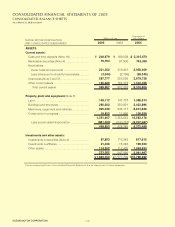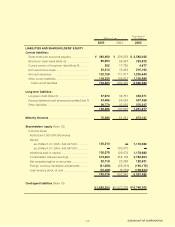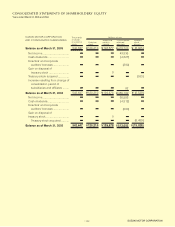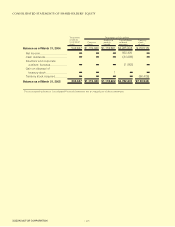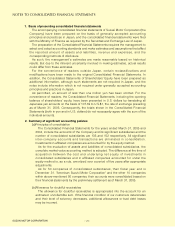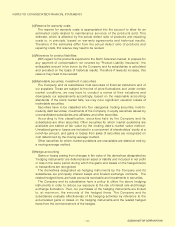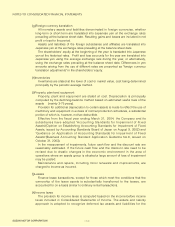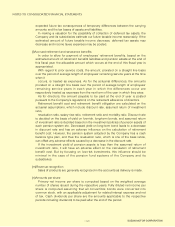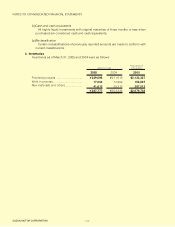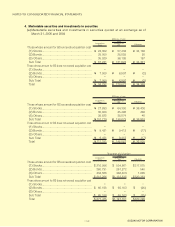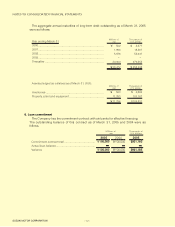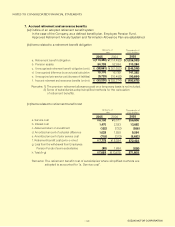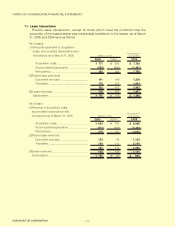Suzuki 2005 Annual Report Download - page 31
Download and view the complete annual report
Please find page 31 of the 2005 Suzuki annual report below. You can navigate through the pages in the report by either clicking on the pages listed below, or by using the keyword search tool below to find specific information within the annual report.
(g)Foreign currency translation
All monetary assets and liabilities denominated in foreign currencies, whether
long-term or short-term are translated into Japanese yen at the exchange rates
prevailing at the balance sheet date. Resulting gains and losses are included in net
profit or loss for the period.
Assets and liabilities of the foreign subsidiaries and affiliates are translated into
Japanese yen at the exchange rates prevailing at the balance sheet date.
The shareholders' equity at the beginning of the year is translated into Japanese
yen at the historical rates. Profit and loss accounts for the year are translated into
Japanese yen using the average exchange rate during the year, or alternatively,
using the exchange rates prevailing at the balance sheet date. Differences in yen
amounts arising from the use of different rates are presented as "foreign currency
translation adjustments" in the shareholders' equity.
(h)Inventories
Inventories are stated at the lower of cost or market value, cost being determined
principally by the periodic average method.
(i)Property, plant and equipment
Property, plant and equipment are stated at cost. Depreciation is principally
computed by the declining-balance method based on estimated useful lives of the
assets (mainly 3-75 years).
Provision for additional depreciation to certain assets is made to reflect the use of
machinery and equipment in excess of normal production schedules, a substantial
portion of which is, however, not tax deductible.
Effective from the fiscal year ending March 31, 2004, the Company and its
subsidiaries have adopted "Accounting Standards for Impairment of Fixed
Assets"(Opinion on Establishing Accounting Standards for Impairment of Fixed
Assets, issued by Accounting Standards Board of Japan on August 9, 2002) and
"Guidance on Application of Accounting Standards for Impairment of Fixed
Assets"(Business Accounting Standard Application Guideline No.6, issued on
October 31, 2003).
In the measurement of impairments, future cash flow and the discount rate are
reasonably estimated. If the future cash flow and the discount rate need to be
revised due to drastic changes in the economic environment in the area of
operations where an assets group is situated,a large amount of loss of impairment
may be posted.
Maintenance and repairs, including minor renewals and improvements, are
charged to income as incurred.
(j)Leases
Finance lease transactions, except for those which meet the conditions that the
ownership of the lease assets is substantially transferred to the lessee, are
accounted for on a basis similar to ordinary rental transactions.
(k)Income taxes
The provision for income taxes is computed based on the income before income
taxes included in Consolidated Statements of Income. The assets and liability
approach is adopted to recognize deferred tax assets and liabilities for the
NOTES TO CONSOLIDATED FINANCIAL STATEMENTS
SUZUKI MOTOR CORPORATION −31−




